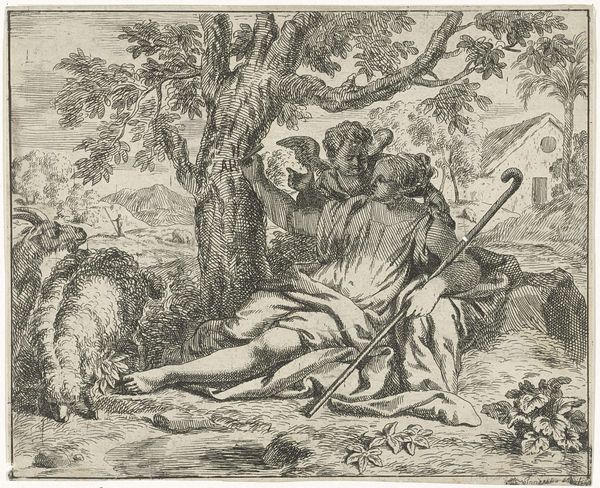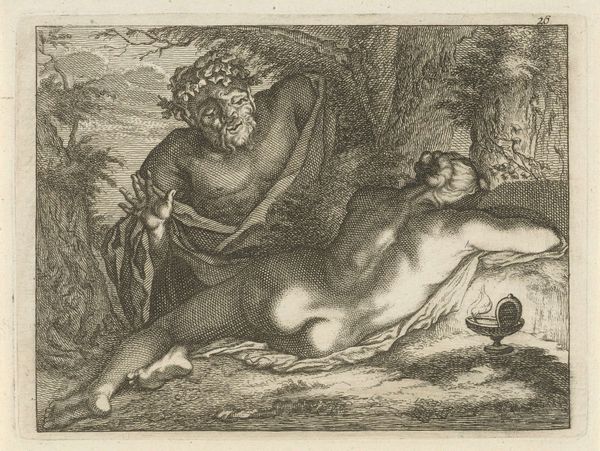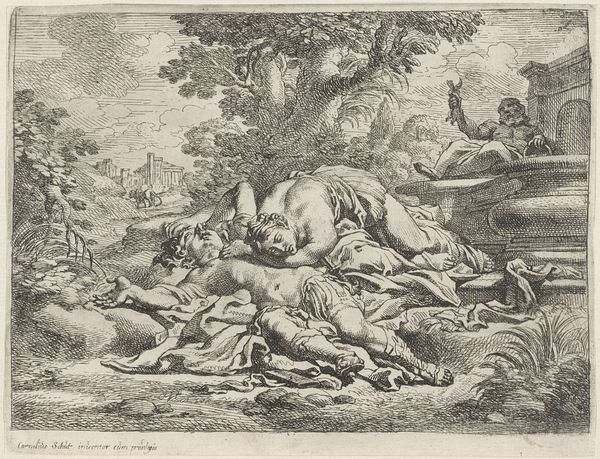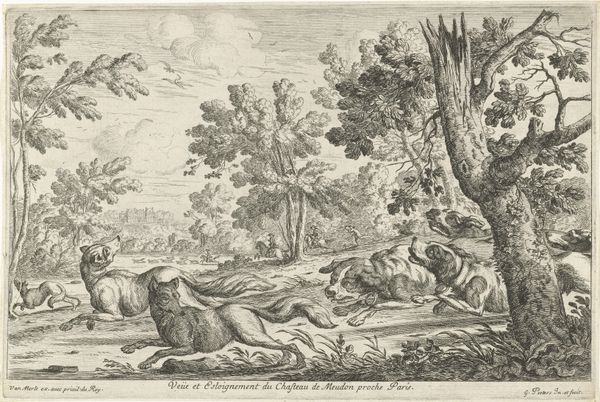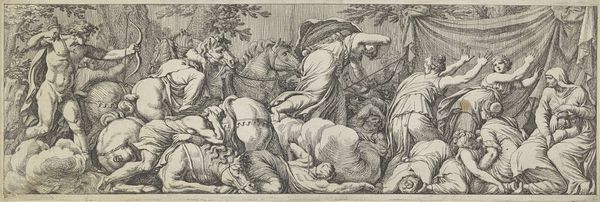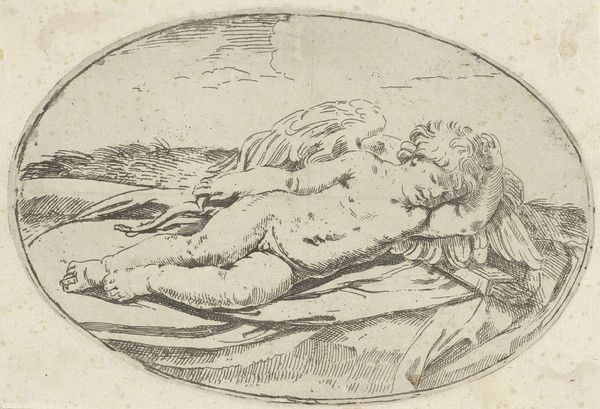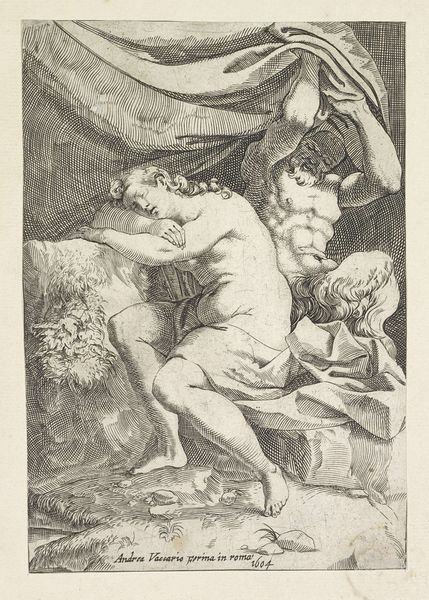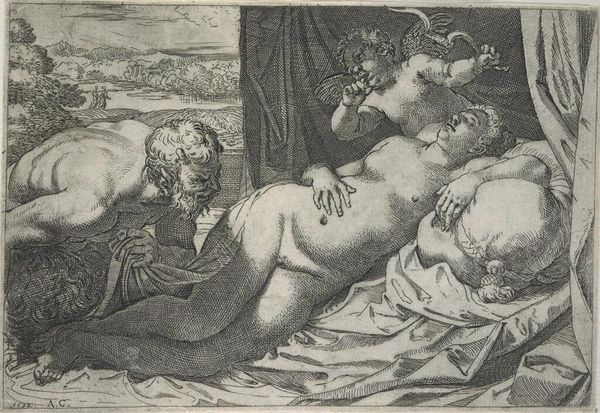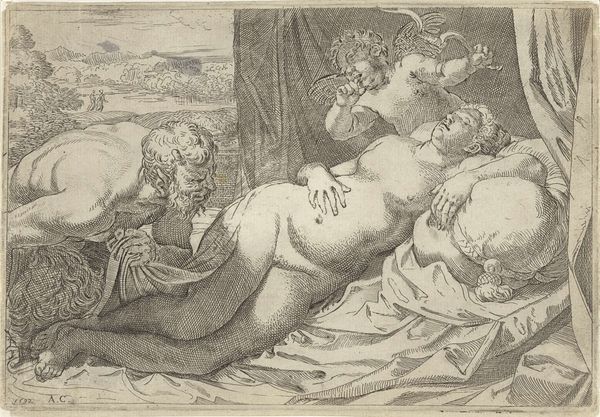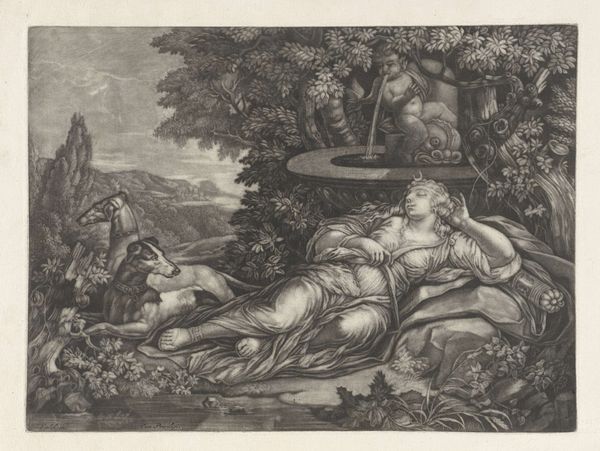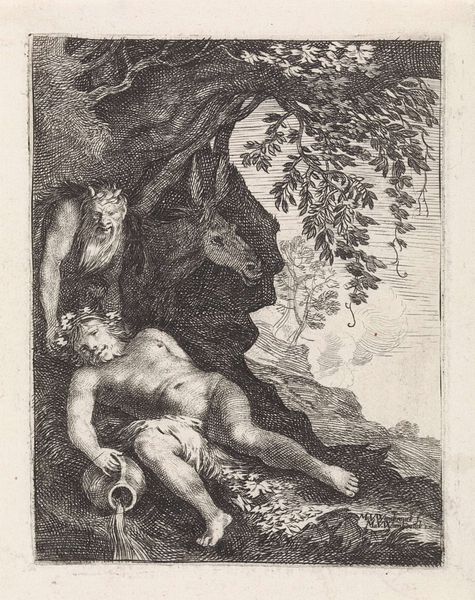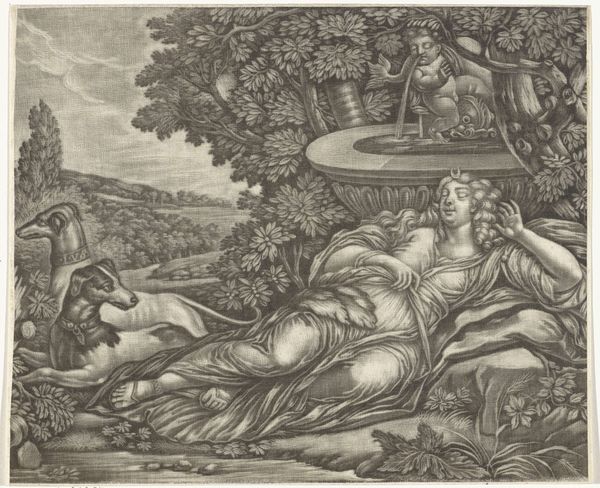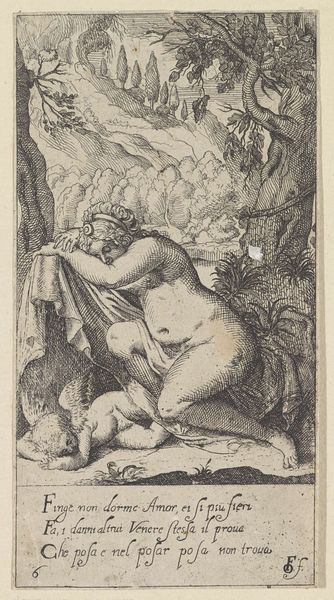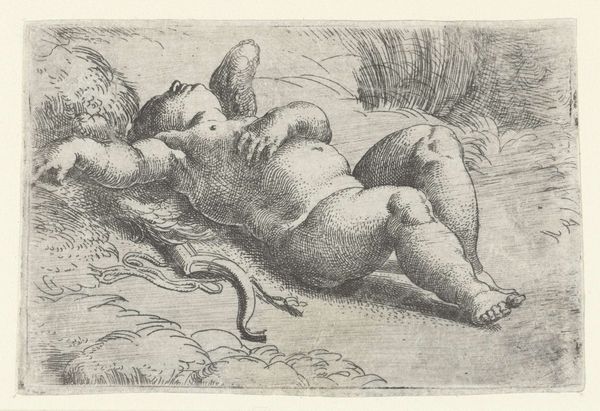
print, engraving
#
dutch-golden-age
# print
#
landscape
#
figuration
#
genre-painting
#
engraving
#
realism
Dimensions: height 131 mm, width 195 mm
Copyright: Rijks Museum: Open Domain
Editor: Here we have Reinier van Persijn’s "Weiland met drie liggende koeien," or "Pasture with three lying cows," an engraving from 1641. It’s striking how the cows are given such prominence; they really dominate the scene. What do you see in this print, especially considering the time it was made? Curator: Well, seeing this pastoral scene through a historical lens, I find it interesting how it taps into the growing urban-rural divide of the 17th century. The Dutch Golden Age was a period of intense urbanization and economic growth, largely based on trade. Images like this provided a comforting vision of the countryside, idealized and perhaps nostalgic. Notice how the figure of the herdsman is also rather small and relaxed – there isn’t any intense labor being shown, it speaks to a comfortable and calming experience. Editor: So, you're saying this image might have served as a form of escapism for city dwellers? Curator: Precisely! Prints like these were widely distributed and affordable. It's important to consider who the audience was. Were they city merchants? A rising middle class who yearned for the tranquility that they likely never had? This wasn't necessarily about accurately depicting rural life but constructing an image that resonated with its viewers and socio-economic status of the region.. How do you think this piece reflects the Dutch artistic tradition? Editor: I guess I always considered Dutch art from this period about very precise and accurate portraiture or still life… This is quite a deviation! Curator: True, those were incredibly important genres, but there was also this interest in landscapes and genre scenes, all influenced and impacted by the markets. Ultimately, “Pasture with Three Cows” invites reflection on how cultural values and anxieties are represented in art. I hadn’t thought so deeply about this type of work and how its market impacted its presentation before. Editor: Agreed, understanding the work through its historical context really highlights its social function. Thanks for this great tour through Dutch print culture!
Comments
No comments
Be the first to comment and join the conversation on the ultimate creative platform.
